Spotlighting India’s Religious Diversity through Heritage
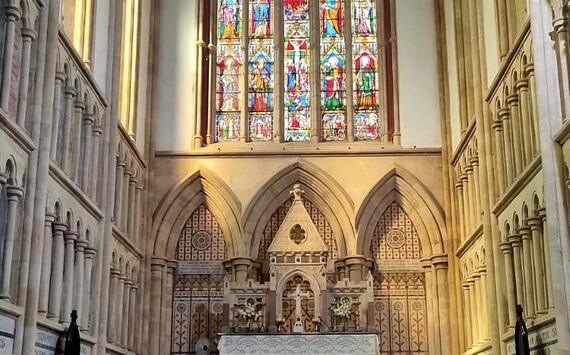
From a Sephardic synagogue where spice merchants once worshiped to caves richly painted with Tibetan Buddhist murals, the religious sites World Monuments Fund (WMF) has helped conserve in India testify to the country’s long history of religious pluralism. Celebrating the incredible diversity of Indian heritage has been central to our work there for over 25 years. In this post, we’re highlighting the breadth of sacred places WMF has worked at in India—and how heritage has the potential to create a more inclusive society.
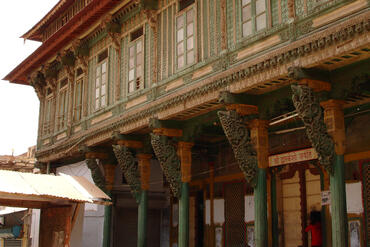
Stabilizing a community touchstone in the wake of disaster
After an earthquake devastated much of Gujarat in 2001, WMF invested in the restoration of the historic Hindu temple of Dwarka Dheesh Mandir. Closer inspection of the temple walls revealed that the moveable wooden banding at the base of the structure was designed to withstand earthquakes. As a result, the temple was among the few historic structures that did not collapse in the disaster. WMF’s intervention led not only to the stabilization of the site but also to a comprehensive study of the local knowledge that has preserved India’s heritage over the centuries.
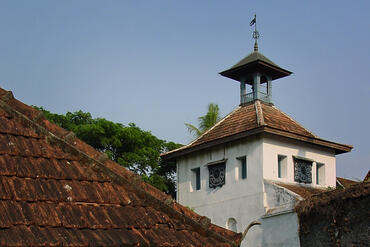
Paradesi Synagogue Clock Tower
Reviving a symbol of Jewish migration and multiculturalism
The Paradesi Synagogue Clock Tower stands as a reminder of a small Jewish community that was pushed out of Europe in the fourteenth century and came to India, where they lived under the protection of the King of Cochin. Over time, they became fully integrated while still safeguarding their own traditions. The interior of this unique synagogue is an amalgam of the global influences that define Cochin, with Chinese tiles and clocks that provided the time in English, Aramaic, and Malayalam. WMF’s restoration enabled the clock to function after many years of disrepair, bringing this important community landmark back to life.
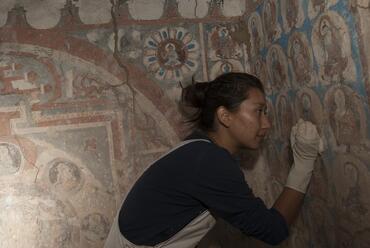
Ladakh
Protecting the region’s earthen monasteries from the elements.
Once at the heart of the silk trade, Ladakh has a unique architecture and culture that is completely in harmony with the environment of the Tibetan Plateau. But in recent decades, extreme temperatures and unprecedented rainfall have caused extensive damage to the area’s historic earthen structures. In addition, the diminishing wealth of local monasteries has resulted in decreased maintenance, placing structures further at risk. To date, WMF has worked at the Ladakhi sites of Basgo Gompa, Sumda Chun, and Saspol, partnering with local communities and monks to work towards the restoration of invaluable paintings, sculptures, and temple architecture.
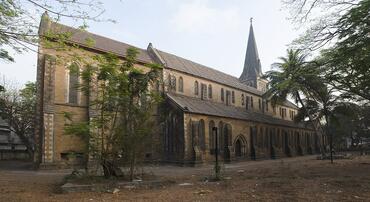
Restoring a Gothic Revival icon and strengthening a community hub
The Afghan War Memorial Church is an outstanding example of Gothic Revival architecture in India. Erected to commemorate the first and second Anglo-Afghan Wars, the building—now 160 years old—is a rare example of a war memorial church, and the original flags and pennants carried during battle are still on display. While still offering Sunday services, the Afghan Church also has become a cultural hub in Mumbai, with concerts, art shows, and charitable dispensaries held on its extensive grounds. But the Afghan Church faces a range of threats, from increased rainfall due to climate change to a shrinking congregation. This project partnership aims to restore the building in its entirety, from stained-glass windows to interior finishes to the very structure itself restoring it also as a treasured multi-cultural space in the city.
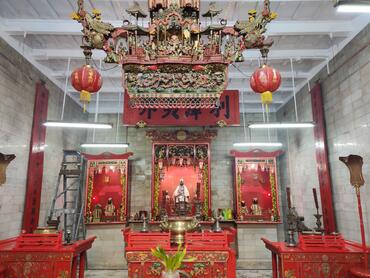
Advocating for the recognition and protection of a historic district.
In the heart of Kolkata lies Tiretta Bazaar, India’s oldest Chinatown. The neighborhood began to take on its current form in the mid-eighteenth century, as Chinese sailors started to settle in the area, bringing their own rituals, traditions, and architectural styles. While the neighborhood has retained its cultural and ethnic identity within the city, its community is marginalized, and its heritage is at risk. Adjacent development encroaches upon the historic neighborhood and threatens its very existence, while a dwindling and aging community is left to uphold local tradition. While individual buildings such as traditional Chinese temples are protected, recognition as a historic district will safeguard the entire neighborhood and draw attention to the need to preserve the diversity of India’s heritage.
Learn More
World Monuments Fund safeguards cultural heritage around the globe, ensuring our treasured places are preserved for present and future generations.
Sign up for our newsletter to receive regular updates on our projects, stories from the field, upcoming events, and more!
![]()
